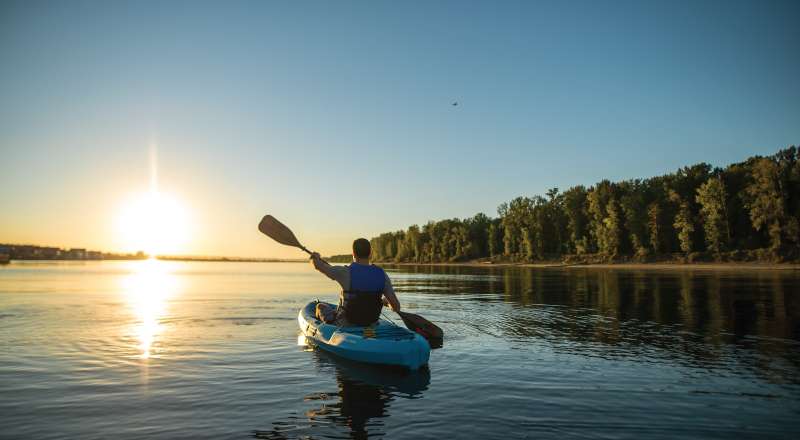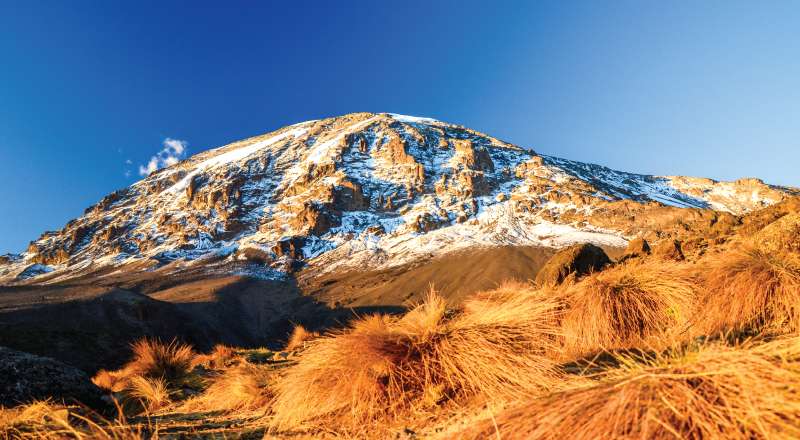6-Day Budget Kilimanjaro Machame Route
Overview
Machame Route, starting at 1,640m, winds through diverse landscapes, showcasing giant lobelia and Senecio. The highlights include the Lava Tower ascent, Barranco Wall climb, and Karanga Valley trek. Day 5 features a midnight summit attempt at Uhuru Peak, followed by a descent to Barafu Camp. Day 6 descends to Mweka Gate, ensuring gradual acclimatization amidst Kilimanjaro’s beauty. Climbing demands both physical and mental readiness, emphasizing the need for a reputable tour operator.
Inclusions & Exclusion
- Porterage
- Porterage
- Park fees (For non-residents)
- All activities (Unless labeled as optional)
- All accommodation (Unless listed as upgrade)
- A professional driver/guide
- All transportation (Unless labeled as optional)
- All Taxes/VAT
- Meals (As specified in the day-by-day section)
- Drinking water (On all days)
- Climbing gear
- International flights (From/to home)
- Roundtrip airport transfer
- Additional accommodation before and at the end of the tour
- Tips (Tipping guideline US$10.00 pp per day)
- Personal items (Souvenirs, travel insurance, visa fees, etc.)
- Government imposed increase of taxes and/or park fees
Day by Day
Day 1: Machame Gate to Machame Camp
We will pick you up from your hotel in Arusha or Moshi. The journey begins with a 50-minute drive from Moshi to the Mount Kilimanjaro National Park Gate. During this drive, you’ll pass through the village of Machame, situated on the lower slopes of the mountain.
After leaving the park gate, the trek commences as you venture into the rainforest. You’ll follow a winding trail up a ridge. In the lower sections, the trail can be muddy and slippery, so gaiters and trekking poles are advisable.
You’ll continue along the trail through the rainforest until you reach the Machame Camp.
Your journey leads you to the Machame Camp, where you’ll set up camp for the night.
- Main Destination:
- Mount Kilimanjaro
Day 2: Machame Camp to Shira Camp
You’ll start the day with breakfast, then leave the rainforest behind as you follow an ascending path.
You will continue along the trail, crossing a little valley and ascending a steep, rocky ridge covered with heather until you reach the end of the ridge.
The path now turns west and leads you into a river gorge, where you can take a break and have dinner.
You’ll conclude the day at the Shira campsite, where you’ll spend the night.
- Main Destination:
- Mount Kilimanjaro
Day 3: Shira Camp to Lava Tower to Barranco Camp
You’ll begin the day by moving east from the Shira Plateau, ascending along a ridge. You’ll pass by the junction that leads to the Kibo peak.
As you proceed, your direction changes to the southeast, leading you to the Lava Tower, often referred to as the “Shark’s Tooth.”
After the Lava Tower, you’ll reach a second junction that takes you up to the Arrow Glacier at an altitude of 16,000 feet.
You’ll continue your journey by descending to the Barranco Hut, located at an altitude of 13,000 feet. Here, you’ll rest, enjoy dinner, and spend the night.
Although you end the day at the same elevation as when you started, this day is crucial for acclimatization, preparing your body for the summit day.
- Main Destination:
- Mount Kilimanjaro
Day 4: Barranco Camp to Karanga Camp to Barafu Camp
You will begin the day after breakfast, departing from Barranco. You’ll continue along a steep ridge, including the challenging Barranco Wall, until you reach the Karanga Valley campsite.
From Karanga, follow the trail to the junction connecting with the Mweka Trail. Keep ascending until you arrive at the Barafu Hut.
You’ve now completed the South Circuit, providing unique views of the summit from various angles. You will set up camp, rest, enjoy dinner, and prepare for the upcoming summit day.
While at the Barafu Hut, you’ll take in the magnificent vistas of both Mawenzi and Kibo, the two prominent peaks of Kilimanjaro.
- Main Destination:
- Mount Kilimanjaro
Day 5: Barafu Camp to Summit to Mweka Hut
You’ll start the summit climb between midnight and 2 am, heading northwest through challenging scree terrain towards Stella Point on the crater rim.
You’ll take a short break at Stella Point (18,600 ft) and witness a magnificent sunrise if the weather permits. You’ll continue to Uhuru Peak, the highest point on Kilimanjaro and in Africa.
You’ll descend directly to Mweka Hut after reaching the summit, with a lunch stop at Barafu. Gaiters and trekking poles are necessary for the loose gravel descent.
Expect mist or rain at Mweka Camp in the upper forest in the late afternoon. You’ll enjoy your last dinner on the mountain in the evening, followed by a well-deserved rest.
- Main Destination:
- Mount Kilimanjaro
Day 6: Mweka Camp to Mweka Gate
Following breakfast, you will proceed with the descent to the Mweka Park Gate to receive your summit certificates.
Be prepared for potentially wet and muddy conditions at lower elevations. Gaiters and trekking poles can be beneficial.
Light clothing like shorts and t-shirts should suffice but keep rain gear and warmer clothing readily accessible.
- Main Destination:
- Mount Kilimanjaro








Request a travel proposal

Call us Today
+2557 87 447 893
Professional private guides, comfortable private jeeps, flexible itineraries, and the best customer experiences.
Trips Gallery
Completed Journeys









Book your dream vacation now!
A Tanzania vacation is the ultimate once-in-a-lifetime holiday! Tanzania is a top safari destination and has so much to offer. You can choose to experience an amazing Tanzania safari or relax at the world’s most beautiful beaches on Zanzibar Island. Or did you always dream about climbing Kilimanjaro? We are called Tanzania Specialist for a reason: we offer the most extensive range of Tanzania vacation!
You can choose one of our popular Tanzania itineraries or build your own trip exactly on the way you love it. Let us know which national parks and islands you like and we will design the perfect Tanzania vacation for you.
Kilimanjaro climbing, Zanzibar & Safari FAQ.s
Frequently Ask Questions
What currency should I bring?
We would recommend bringing USD (United States Dollars) with you and withdrawing some Tanzanian Shillings once you arrive. There are ATMs in Arusha/JRO Airport. Most places that you will visit accept USD but it’s always good idea to have local currency.
What vaccinations do I need?
You will require vaccinations for your trip. All travellers should visit either their personal physician or a travel health clinic about 3 months before departure. Ask your doctor about vaccinations recommended by your government before travelling to Tanzania. Yellow Fever Vaccination is compulsory and to be taken at least 10 days before arriving in Tanzania. The other recommended vaccinations are Tetanus, Polio and, Malaria (prophylaxis).
Which airport should I fly to?
Kilimanjaro International Airport (JRO) is approximately 60km (60 min) from Arusha city centre. Kilimanjaro International Airport is the closest International Airport to Arusha.
Arusha Municipal Airport (ARK) is on the outskirts of Arusha but only operates domestic flights (Dar es Salaam, Zanzibar, Serengeti).
Other options include flying to Dar es Salaam and then catching a domestic flight to Kilimanjaro or Arusha. You can also fly to Nairobi (Kenya). International flights to this destination are often cheaper. You can then fly from Nairobi to Kilimanjaro or take a bus from Nairobi Airport to Arusha (approximately 7 hours).
How can I pay the balance for my Climb and Safari?
- Cash in USD before the tour start.
- Pay by card before the tour starts with a 5% card processing fee. (Applicable throughout Tanzania)
- Pay by bank transfer at least 4 weeks in advance.
What gear should I bring for Safari and Kilimanjaro?
Waterproof, windproof, breathable pants and jacket with hood Goretex is excellent. packs (like Camelbaks) also work well, although the hose can freeze on the summit climb. Headlamp with extra batteries You might also consider a backup flashlight in case your headlamp fails.
Kilimanjaro and Safaris Packing List You can hire the required gear on the spot when you arrive in Tanzania.
Should I bring a First aid kit?
There will be basic First Aid Kit in the Safari Vehicle, also we have it for the Kilimanjaro climbing, but still we recommend bringing a personal First Aid Kit. This is a suggested list of supplies: Sun Screen, Antihistamine cream & tablets,
What is the weather like in Tanzania?
The weather varies greatly, depending on where you are. Whatever time of year you come, please bring some warm clothes! It gets really cold in some places because of the high altitude, especially in June, July and August. It can also get very hot during afternoon. We advise dressing in layers. Typically, the long rains are March, April, and May. The short rains are in November / early December.
Can I visit a Maasai village after Kilimanjaro?
It is possible to visit one of several Maasai villages during your safari. However, these villages are close to the main roads and whilst you will meet many Maasai, have a tour around their village and have an opportunity to learn about their culture, some clients have given the feedback that the experience felt a little uncomfortable. It costs $25 per person and during the visit, you will be encouraged to buy some of their jewellery/craft (this is by no means compulsory). It is inevitable that over time, the experience has become less authentic and we are in the process of sourcing alternative options for our clients. You are very welcome to visit, but we wanted to be open and transparent about the kind of experience you can currently expect.
How much is the Tipping for Supporting Teams??
Tipping is highly expected in Tanzania. There is a well- established culture of tipping.
Guides: If you feel you have received good service, a typical tip is U$D 10-15 per person, per day. The guides work extremely long hours and tips supplement their income significantly. Anything you can afford is appreciated.
Tipping in accommodation is also discretionary. Most accommodation will have a tip box in Reception. We would recommend putting something in at the end of your stay, rather than giving individuals money. Depending on the level of service, we recommend $10 per day (for a group of 2).
How many porters & supporting staffs for the Kilimanjaro climb?
The crews for one person for Kilimanjaro climbing include:
=> 1 Guide
=> 1 Chef Cook
=> 1 Waiter
=> 1 Toilet Porters
=> 4 Supporting Porters


